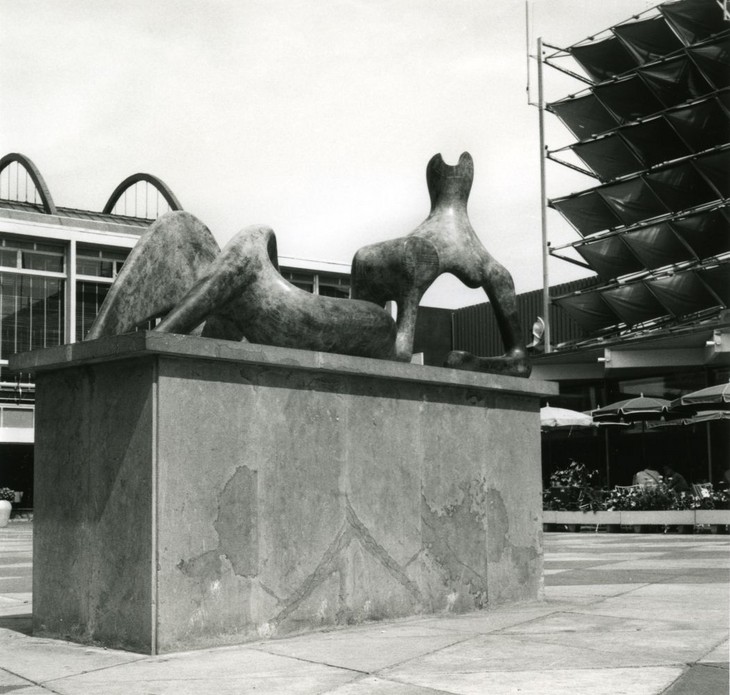Public identity

Henry Moore
Reclining Figure 1951 installed on the South Bank during the Festival of Britain 1951
© The Henry Moore Foundation. All Rights Reserved
Photo: Henry Moore Foundation Archive
Henry Moore
Reclining Figure 1951 installed on the South Bank during the Festival of Britain 1951
© The Henry Moore Foundation. All Rights Reserved
Photo: Henry Moore Foundation Archive
His working class origins and his willingness to champion the welfare state helped align him with the prevalent values of the postwar western societies. He was promoted abroad as the embodiment of Britain’s modernising image, and found himself taken up in America in part because, during the era of the Cold War, his work could be seen as embodying the values of individual and humanism.
Moore readily seized the opportunities provided by mass media, notably television, to disseminate his ideas and artistic vision to a broad audience. He also collaborated with various photographers to create books that gave insights into his working life. These helped to frame for a general public how he wanted his work to be viewed and understood.
How to cite
‘Public identity’, in Henry Moore: Sculptural Process and Public Identity, Tate Research Publication, 2015, https://www
